The Pro-Bourbon Counter Revolution
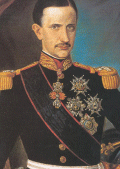
Since the very first days of Garibaldi’s dictatorship and for the subsequent years, the rapid conquest of the Kingdom of the Two Sicilies by the Piedmont army, occurred with the indirect but concrete support of France and Great Britain and incited a general rising of the populations of the Kingdom in favour of Francis II. Tens of thousands of people rose up in arms all over the continental regions (just as sixty years before, at the time of anti-Jacobin risings and the Sanfedist epic deeds of Cardinal Ruffo), and caused an insurrection that raised difficulties for the Garibaldian troops and then for the Piedmont army and government in the first years after the unification.
Books of history and the Risorgimento “Vulgate” that shaped the collective historical opinion of the Italians on those events have always presented this popular rising in a reductive way from the point of view of both quality and chronology and they have always branded it with the wrong and deceptive name of Bourbon “Brigandage”.
Today many scholars have demonstrated that this phenomenon must receive a completely different interpretation (the first historian who carried out a serious study on this matter was the Marxist historian Franco Molfese, followed by other historians such as Alianello, Zitara, Albonico, Leoni, Del Boca, Martucci and many others), and they have done it by relating the terrible massacres and violence, the terror and poverty that struck the people of southern Italy. It was a great lawful and religious popular rising against the unification, and the Turin government repressed it with methods that were in no way inferior to those that would be used in the XX century (and had been already experimented in the Vandee by Robespierre and other Jacobin leaders). The social motive played a role in it as well as real brigands, but this cannot become the explanation of a civil war that lasted for five years (even ten years, if we consider the aftermath) and saw the involvement of tens of thousands of men and women in arms against an army and a government that they considered as “invaders”. The real deep cause of this violent, undaunted and spontaneous popular counterrevolution must be found in the loyalty of the southern people to the dynasty who had been dethroned in a violent and sneaky way, against the very will of these southern people, as they showed with their resistance against Piedmont and Garibaldian invaders.
We list here below the main historical and conceptual elements that marked the anti-unification rising:
- The word “brigandage” is just an ideological confusion of the social and the political aspects of this phenomenon, confusion started by Robespierre in France during the Vandean counterrevolution (he called “brigands” the aristocrats, the clergy, middle-class people and farmers who rebelled against his Terror), and continued over time during these risings and mainly during the anti-unification risings in southern Italy;
- The rebellion, in reality, had an extraordinary size and started in August 1860, immediately after the landing of Garibaldi’s troops: in total, at the apex of the war, there were 350 brigand groups and involved tens of thousands of people, of which 20,000 to 70,000 died; the Kingdom of Italy had to send up to 120,000 soldiers to southern Italy to put down the guerrilla;
- In spring 1861 the uprising spread like wildfire all over the former Bourbon Kingdom; in August General Enrico Cialdini was sent to Naples with full power: one of the most merciless military repressions recorded by history started at that moment: massacres, destructions of towns and rebel villages, executions and fires, pillages and instigation to delation, forced residence (for the first time in the history of Italy), destruction of farm-houses end elimination of livestock to completely ruin rebel farmers;
- Special attention was paid to psychological warfare, and the proclamations issued contained terrible threats (regularly implemented) and the photos of rebels slaughtered with their families, etc., to frighten the “accomplices”, i.e. those who helped the rebels;
- then there was the proclamation of the martial law in 1862: the whole Kingdom (including Sicily for no clear reason) was put under martial law;
- In 1863 a Parliamentary Investigating Committee on Brigandage was established (Massari), upon request of left-wing parties – that reported the horrible massacres perpetrated with the authorisation of the Government. However, the left-wing parties requested the establishment of this Committee only to discredit the right-wing parties and deliver southern Italy to Garibaldi; at first, right-wing parties opposed this Committee, then they manipulated it and put the blame for the “Brigandage” upon Francis II and Pius IX;
- the Pica Law was a consequence of the Committee and the highest expression of a bloodthirsty repression;
- “Brigandage” and repression continued until 1870 (with a new peak in 1868), and their overall data are appalling;
- in fact, the armed resistance had also a “civil” character: parliamentary opposition was organised, the magistracy held protests since its glorious and centuries-old traditions had been cancelled, civil servants carried out a passive resistance and refused to take over administrative tasks, the population expressed its displeasure and did not go to vote when elections were held or refused the conscription, many people emigrated, underground press saw a great diffusion and the best freelance journalists in the Kingdom – among which Gacinto de’ Sivo – argued polemically against the situation;
- the cream of European legitimist aristocracy took part in the resistance: Earl Henri de Cathelineau (a descendant of the hero of Vendée), the Prussian Baron Theodore Klitsche de La Grange, the Saxon Earl Edwin of Kalckreuth (shot in 1862), the Belgian Marquis Alfred Trazégnies de Namour (shot in 1861), Earl Emile-Théodule de Christen, the Catalans José Borges (called the “anti-Garibaldi”) and Rafael Tristany, etc.;
- The deepest motivations were religious ones: the population hated liberals and “gentlemen” because since the time of Napoleon they had oppressed and held religion in contempt by profaning churches and relics; the presence of friars and priests is a constant in popular representations of the guerrilla, and the flags always portrayed religious subjects; also the Jesuit magazine “La Civiltà Cattolica” always expressed its liking for the rebellion.
The Beginning of the Rebellion and its Repression
On 6 September 1860 Francis left Naples. On 8 September he called for the armed resistance and 50,000 men responded.
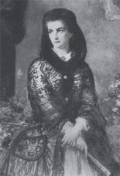
On 19 September at Roccaromana and on 21 September at Caiazzo farmers rose up and went to help the Bourbon troops against the Garibaldian troops. On 23 September the first brigade of 4 battalions – each with 6 companies – was formed with both soldiers and farmers, under the lead of Colonel Teodor Klitsche de Lagrange, who received his orders by the minister of the police Calà Ulloa: restore the lawful governments, confiscate the coffers of the municipalities and send them to Gaeta (where in the meanwhile Francis II and Maria Sofia had taken refuge with all their most loyal forces) and protect churches and priests. The same orders were given also to generals Scotti-Douglas and von Meckel, with the aim of fostering a general uprising in Terra di Lavoro.
The operation had a resounding success: in a few weeks, all the northern provinces of the Kingdom rose up, first against the Garibaldian troops, then against the Savoy troops and the “Italian” army; after that, in the subsequent months, and for years, all the kingdom rose up, whereas the military strongholds of Civitella del Tronto, Messina and Gaeta showed an heroic resistance. The ruthless repression began in October 1860. General Villamarina asked Farini to proclaim martial law, whereas the day after Cialdini arrived and by a proclamation began the executions. On 23 October, Fanti issued a proclamation that gave competence to special war tribunals for brigandage crimes; on 2 November, the governor of Teramo and Pinelli proclaimed martial law in those territories and immediate execution for those who would be found armed. As for Pinelli, in the territories of L’Aquila he had already started to execute also those who were just suspected to help brigands or who insulted by words or actions the Savoy or their flag. General Della Rocca ordered that in Sora and Avezzano territories prisoners would immediately be executed because prisons were already overcrowded. In Turin there was a great and widespread concern and so in July 1861 Cialdini was appointed as Lieutenant-governor and took both military and civil powers. At the end of August, there were already 40,000 soldiers in southern Italy; in October there were 91 battalions, 37 of which in Naples; by December 50,000 men had risen up.
The rebels would reach the figure of 120,000 men in the subsequent years.
But on 9 October Ricasoli, who did not like Cialdini, deposed him and gave his position to Lamarmora, who continued his ruthless repression by enforcing a strict martial law. The counterrevolution, however, was more active than ever (Molfese mentions the names of many armed groups and leaders) and the repression became more ruthless than ever. In Capitanata, Mazé de la Roche did not find any problem in setting fire to houses and barns and in arresting people just because they were found out of a town. The terror exceeded all boundaries. Hundreds of people were shot every day. Molfese mentions many clashes and slaughters of brigands and populace. The guerrilla was widespread all over southern Italy. The populace had risen up, rebels were thousands and thousands from Abruzzo to Calabria, every place was revolting. Even the Hungarian divisions were used against the rebels. The entire former-Kingdom had rose up.
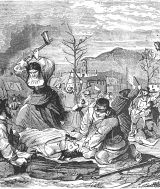
On this topic, Molfese wrote (p. 229-230): «Concerning the “cafoni” and farmers in general, the army adopted a terrorist repression. In this sector, the behaviour was clear since the very beginning of the southern campaign and the “cafoni”(peasants) found armed or suspected to support the brigands were executed on the spot. Retaliations, fires, vandalic actions and pillages were largely practised. The repression of brigandage was a real dark page and a sad training for the young Italian army. Between 1861 and 1862, some local commanders (…) issued Draconic proclamations enforcing execution for any infringement to the many prohibitions that, in addition, were paralysing the economic and social life of the provinces. But this repression, over which the “love for one’s country” has drawn a veil, accomplished also excessive actions that nothing had to do with terrorist repression. Mass imprisonments carried out even in seriously doubtful circumstances, and the imprisonment of the relatives of the suspects were the general rule applied since the beginning (…) even more serious actions, such as the slaughtering of prisoners, were not unusual…» [F. MOLFESE, Storia del brigantaggio dopo l’Unità, Feltrinelli, Milano 1964, pp. 229-230].
Fifteen years later, Settembrini called the army «the iron wire that has stitched Italy and keeps it together» [In: ibidem, p. 230].
In 1863 the government took a resolutive decision: between 3-5 May 1863, in a secret meeting, the Chamber listened to the report of an Investigating Committee sent to the war territories, while the National Guards surrounded Palazzo Carignano. We know only those parts of this report that were subsequently published, as six passages of the original text had been censored and lost forever. Even the deputies were not allowed to see the documents. The government counteroffensive was immediate, simple and radical: on 15 August the Pica Law against brigandage came into force and remained in force until 31 December 1865 (it was extended also to Sicily with no real motivation): the entire southern Italy was declared “under brigandage” (with the exception of Teramo, Reggio Calabria, Naples, Bari, Terra d’Otranto) and therefore under martial law; military war tribunals where established almost everywhere, «framing the provinces of the former Bourbon kingdom into a network of Draconic repression» [R. MARTUCCI, L’invenzione dell’Italia unita, Sansoni, Firenze 1999 p. 336]; the military tribunals could judge the members of armed groups even only upon a suspicion (the famous “Law on Suspicions” of Jacobin memory), and sanction armed resistance with execution (life imprisonment in case of extenuating circumstances), whereas the abetters (the so-called “accomplices”) were convicted to hard labour for all their lives. Moreover, the government could sentence forced residence for suspects, idlers, vagabonds and Camorrists and most of all it could establish armed corps of volunteers to repress “brigandage”.
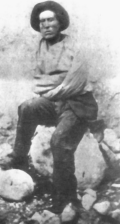
Years later, P.S. Mancini recalled the work of military tribunals and said that he would be silent on this matter not to be forced to «reveal things that would horrify all Europe» [Cit. in MOLFESE, op. cit., p. 347].
Molfese wrote that «people who voluntarily responded, under age young people not captured in a battle, individuals who could not be punished for brigandage but only for common crimes and perhaps had been also charged of brigandage by the Carabineers in their reports were condemned to capital punishment and executed. The wives of brigands were sentenced to life imprisonment as first-level accomplices. Girls under 12, daughters of brigands, were sentenced to 10 or 15 years. A source of many horrors was the power to order the imprisonment of accomplices granted by circular n. 29 of August 1863 to all “military authorities”» [Ibidem]. Between August 1863 and the end of 1864, 3,613 trials were held for 5,224 people. Between April and June 1863, the Carabineers arrested 6,564 people, and this before the coming into force of the Pica Law, that marked a outstanding wave of arrests. Records report 12,000 people arrested and deported under the Pica Law only.
The population, frightened and driven to despair, began to calm down and the leaders of the gangs were isolated or killed. After 1864, in the regions of Benevento, Salerno, Naples, in Terra di Lavoro and in the region of L’Aquila the rebellion was still alive. It continued until 1870 in the regions of L’Aquila, Terra di Lavoro, Salerno, Lagonegro, Calabria and Abruzzo; moreover, between 1866 and 1868, to coincide with the war against Austria and Garibaldi’s expedition against Rome, the “brigandage” dangerously reappeared, especially in the Pontifical State, but these were only the last fires, completely extinguished by the taking of Rome by the Piedmont army.
Roberto Martucci, in his important works, attempted an interesting overall calculation of the entire counterrevolutionary phenomenon and came to the conclusion that the number of people from southern Italy who died (either on the battlefield or executed) varies from «a minimum of 20,075 and a maximum of 73,875 people executed and killed in several ways. This means a figure largely exceeding the total number of casualties in all risings and wars of the Risorgimento from 1820 to 1870» [MARTUCCI, op. cit., pp. 312-314].
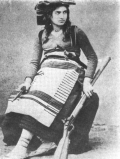
Concerning the tone of the proclamations that terrorised the population, O’ Clery [P.K. O’ CLERY, La Rivoluzione italiana. Come fu fatta l’unità della nazione, (I ed. 1875, 1892), Ed. Ares, Milano 2000, p. 517] did a very useful thing and summarised their general common content: «It appears from these proclamations that the measures adopted to suppress the so-called “brigandage” were: 1) execution, with or without a trial, of all people found armed; 2) pillage of rebel cities and towns; 3) imprisonment, without trial or charge, of suspects and “relatives of brigands”; 4) treatment as accomplices of brigands – and therefore execution or imprisonment – for all those who: a) possessed weapons without a license; b) worked without permission in the fields in some areas; c) took to the fields more food than what was necessary for a meal; d) kept food stocks in the huts; e) shoed horses and possessed or transported horseshoes without license; 5) destruction of huts in the woods, obligation to wall up all isolated cottages, removal of men and livestock from small farms to put them in places controlled by the army; 6) indictment of all neutral behaviours and treatment of neutral people as friends and accomplices of brigands; 7) severe censorship of the press».
The Problem of Prisoners
Concerning prisoners, as Martucci wrote [MARTUCCI, op. cit., pp. 201 e sgg.], there were about 50,000 Bourbon prisoners and more than 18,000 papal prisoners among officers and soldiers. 10,000 Neapolitan soldiers were imprisoned in the fortresses of Ponza and Ischia, to be a prey to typhus, cholera, louses and dysentery. Foreign prisoners were immediately released, as well as those belonging to very important families. But not all of them: Farini, when he was lieutenant-governor of Naples, considered all prisoners, even Bourbon generals, as rebels without a country and this even before the fall of Gaeta.
Then the deportations to the North began: tens of thousands of men were deported to the freezing alpine prisons where they starved and were forced to live in the filth.
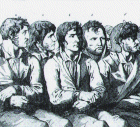
Martucci quoted some passages from a letter written by a witness above all suspicion, Lamarmora, who on 18 November 1860, after a visit to Milan prisons, wrote to Cavour: «he found 1,600 Bourbon soldiers in describable conditions, “all covered by scabies and worms, many of them suffering from eye disease or venereal diseases”; to his utmost surprise, this “herd of swine”, “these scoundrels”, “these dregs” refused to join the Sardinian troops; prisoners “claimed their right to go home because they did not want to make a new oath since they had sworn loyalty to Francis II”. General La Marmora, however, avoided to say whether those soldiers so sick had been treated by Piedmont military doctors, and he did not say why that stinky crowd of miserable people had not received new clothes» [Ibidem, p. 215].
It is even reported that at Fenestrelle, glasses were removed from windows to make these people suffer even more from cold and convince them to join the new army, but they did not give up.
At the end of October 1861, only in the concentration camp of S. Maurizio nearby Turin there were 12.447 former Bourbon soldiers and according to La Civiltà Cattolica other 12,000 soldiers were imprisoned in other prisons.
On 30 June 1861, 52,000 men failed to report for military service [See. A.A.-V.V., Un tempo da riscrivere: il Risorgimento italiano, a cura dell’Associazione culturale Identità Europea, coordinamento di F.M. Agnoli, Itaca, Castelbolognese 2000, p. 25].
Even Great Britain started to worry about that. The British consul in Naples – who had always taken side with the Risorgimento – Bonham, said that in the Neapolitan prisons there were at least 20,000 prisoners (but others gave the figure of 80,000), kept in dreadful barbaric conditions, in the filth and hunger, and many people had to wait years for a trial: a parliamentary discussion was held in London, Lord Seymour and Sir Winston Barron were sent to verify the truth of these statements and they confirmed all reports made to the British Parliament [See. O’ CLERY, op. cit., p. 519 e MARTUCCI, op. cit., p. 310].
Under the Rattazzi government, the minister of foreign affairs, Giacomo Durando, started negotiations with Portugal to establish convict prisons in Asian colonies and in Mozambique, under the pretext of starting a national colonisation process; but it came to nothing because France opposed it [MOLFESE, op. cit.., pp. 332-333. F. CHIOCCI said in one of his articles published by “Il Giornale” (12/IX/2000), the “final solution” of the Piedmontese, that the Government with the approval of the King wanted to buy a penal colony in Borneo to deport 15,000 prisoners and only the chronic lack of money prevented them from committing this infamy].
The same protagonists of the Risorgimento, from Mazzini to Ferrari, from Settembrini to d’Azeglio, strongly condemned what was happening: they expressed very severe opinions against the repressive policy adopted in the south of Italy.
Napoleon III wrote General Fleury: «I remonstrated in writing with Turin; the details I came to know are such as to think they will alienate all honest people from the Italian cause [then he related some events he came to know, such as the execution for those found with “too much” bread with them and concluded] the Bourbon have never done anything similar. Napoleon» [Ibidem, p. 528].





